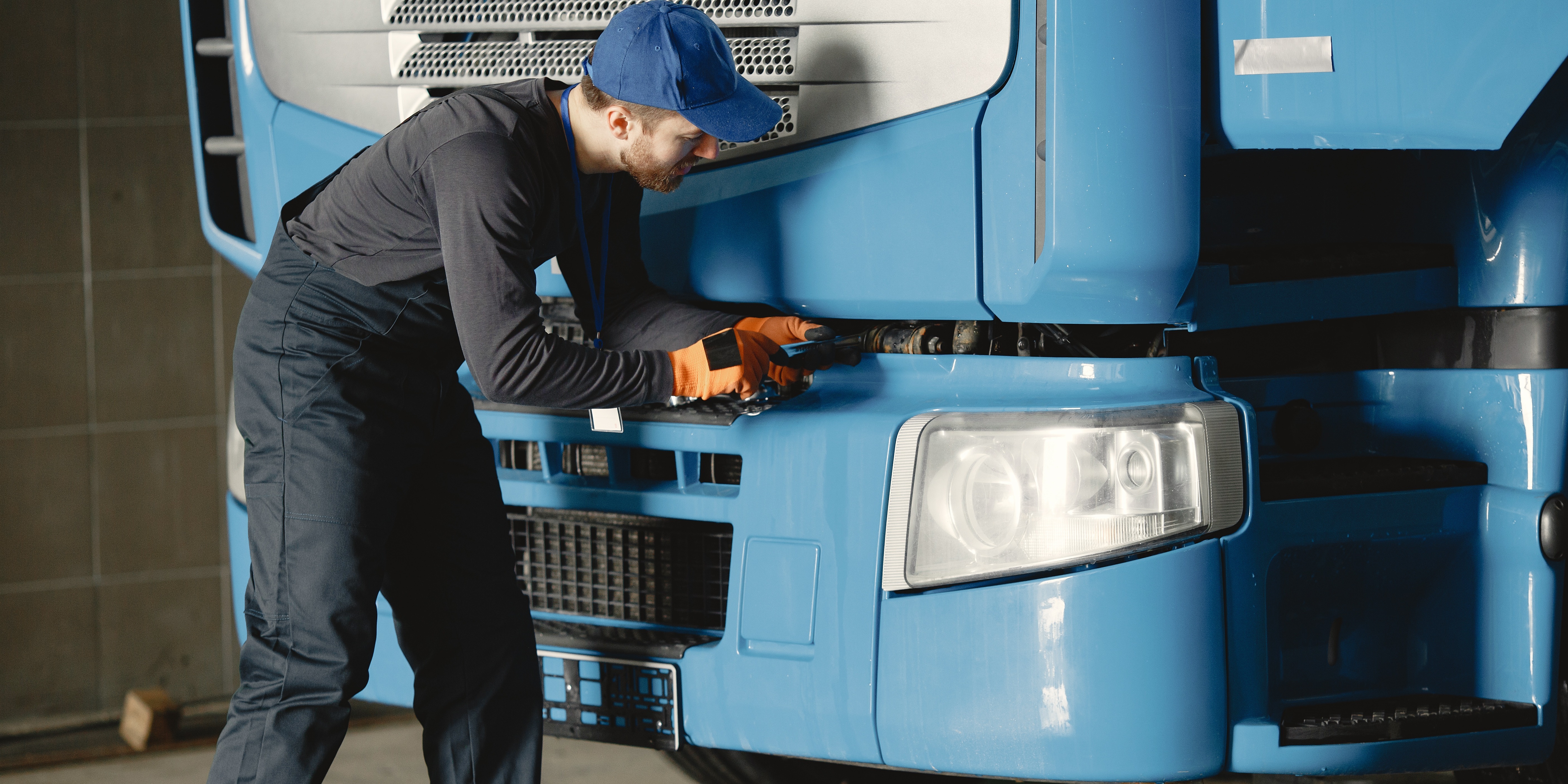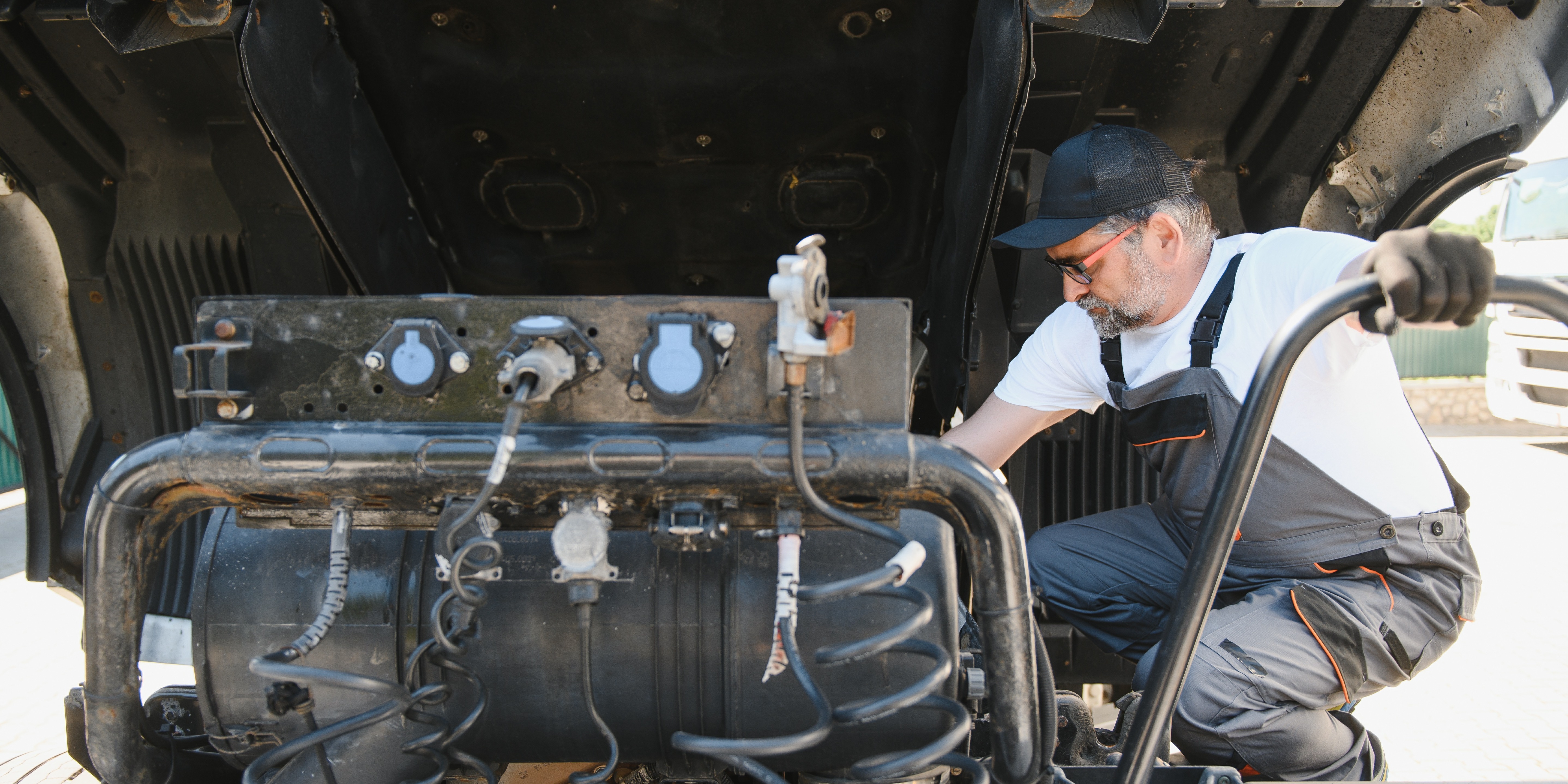
OSHA Compliance Checklist for Repair Shops
Introduction: Safety Rules That Protect Your Shop - and Your Bottom Line
Running a heavy-duty repair shop means juggling diesel trucks, flammable liquids, welding, heavy lifts, and constant movement - all under one roof. That’s exactly why OSHA compliance isn’t optional.
Regulators expect you to protect your workers and maintain a safe environment, but beyond the legal side, non-compliance can get expensive fast. OSHA fines for serious violations can reach $16,131 per infraction, and unsafe shops face lost productivity, injured workers, and even shutdowns. Add to that the cost of unplanned downtime - $450-$760 per truck, per day - and the stakes become clear.
The good news? Meeting OSHA standards doesn’t have to be a mountain of paperwork. By pairing clear processes with modern SaaS tools like ShopView, you can keep your shop safe, compliant, and running at full speed.
Below is your OSHA compliance checklist for heavy-duty repair shops, plus practical strategies to stay ahead using digital tools.
1. Hazard Communication: Label, Train, and Store Properly
Heavy-duty shops deal with everything from brake cleaner and diesel exhaust fluid to solvents and welding gases. OSHA’s Hazard Communication Standard (HazCom) requires you to:
- Maintain a written hazard communication program. This document explains how your shop labels, stores, and trains on chemicals.
- Keep Safety Data Sheets (SDS) for every chemical on-site. These must be easy for employees to access at any time - not locked in a drawer.
- Label all containers clearly, including secondary containers like spray bottles. Each must list contents and hazard warnings.
- Train all employees on chemical hazards and PPE requirements for their tasks. For example, OSHA 1910.133 requires proper eye protection against splashes, and welding requires full-face shields, not just goggles.
Pro Tip: Use digital document storage (like ShopView’s file attachment feature) to keep SDS organized and instantly accessible during inspections.
2. Flammable Materials & Fire Protection
Repair shops are loaded with fire risks - paints, solvents, fuels, and oily rags. OSHA’s rules under 29 CFR 1910.106 and NFPA 10 set clear expectations:
- Store flammable liquids in approved, fireproof cabinets. Keep them labeled: “FLAMMABLE - KEEP FIRE AWAY.”
- Limit on-site quantities (typically ≤60 gallons of moderate-flashpoint liquids).
- Mount ABC fire extinguishers in plain sight, inspect them monthly, and tag them annually.
- If techs are expected to use extinguishers, provide annual fire training.
- Keep work areas free of ignition sources near flammables.
Digital task lists can track extinguisher inspections automatically - no more forgotten tags or missing logs.
3. Emergency Planning: Exits, Evacuations, and Written Plans
Even small shops need written Emergency Action Plans (1910.38) and Fire Prevention Plans (1910.39). OSHA expects you to:
- Document procedures for evacuations, reporting fires, and employee roles.
- Provide at least two separate exit routes, unobstructed and clearly marked. Exit doors must never be blocked by forklifts, tires, or tool carts.
- Keep exits well-lit and marked with illuminated signage.
- Conduct periodic evacuation drills - even if you only have a handful of employees.
An OSHA inspector’s first stop during an audit is often your exit routes. A single blocked door can result in a fine. With ShopView, you can schedule recurring safety walk-throughs and record issues digitally for accountability.
4. Personal Protective Equipment (PPE) & Noise Protection
OSHA requires employers to assess workplace hazards and provide PPE for each task:
- Hard hats, gloves, steel-toe boots, and high-visibility vests for general shop work.
- Goggles or face shields for grinding, welding, and fluid handling. OSHA specifies that safety goggles alone are not enough for welders.
- Hearing protection when noise exceeds 85 dB over an 8-hour TWA (time-weighted average). At this level, you must implement a Hearing Conservation Program, including earplugs and regular audiometric testing.
- Respirators and a formal respiratory program (fit testing, medical clearance, training) for paint booths, welding fumes, or dusty environments.
Integrating PPE checks into daily work orders ensures compliance is built into the workflow - not forgotten on a bulletin board.
5. Equipment Safety & Lockout/Tagout
Heavy-duty shops rely on lifts, jacks, hoists, and forklifts - each with OSHA requirements:
- Inspect and label vehicle lifts and hoists regularly. Keep inspection records on file.
- Forklift operators must be certified under OSHA 1910.178.
- Implement Lockout/Tagout (LOTO) procedures (1910.147) for equipment maintenance. This prevents accidental energization during repairs.
- Keep floors clear, wipe spills promptly, secure hoses, and mark slippery areas. Good housekeeping is one of the easiest ways to avoid injuries.
Using ShopView’s maintenance scheduling ensures inspections and certifications never fall behind.
6. Record-Keeping: Logs, Training, and Documentation
Documentation is often the first thing OSHA asks for during an audit. Shops with more than 10 employees must:
- Maintain OSHA 300 injury and illness logs.
- Keep records of all safety training sessions.
- Store equipment inspection reports.
- Maintain SDS libraries and update them when new chemicals arrive.
Digital storage makes it easy to retrieve records instantly. With ShopView, you can attach documentation to assets, work orders, or compliance tasks, keeping everything in one place.
7. Integrating OSHA Compliance with DOT, DVIR & Fleet Regulations
For many heavy-duty shops, OSHA compliance overlaps with DOT inspections, DVIR reporting, and IFTA regulations. A paper-based system struggles to keep up. ShopView’s integrations with telematics and DVIR apps make compliance part of your everyday workflow:
- DVIR defects auto-generate work orders, so safety issues don’t fall through the cracks.
- Fault codes from telematics systems (like Samsara or Geotab) flow into the system in real time, triggering inspections and repairs.
- DOT inspection reports, IFTA forms, and OSHA logs are timestamped and stored digitally, ready for auditors.
The result: a connected, auditable compliance trail - without drowning in paperwork.
Why OSHA Compliance Is Worth the Effort
Ignoring safety and compliance is a gamble you’ll eventually lose. Consider the risks:
- OSHA fines up to $16,131 per serious violation.
- Fire or chemical incidents can trigger shutdowns and lawsuits.
- Truck downtime costs $450-$760 per day in lost revenue.
- Workplace injuries damage morale, increase insurance costs, and can put you under extra regulatory scrutiny.
On the flip side, shops that take compliance seriously run safer, more profitable operations. Safety measures protect employees, impress fleet customers, and keep inspectors out of your hair.
Digital Compliance = Faster ROI
Switching from clipboards and whiteboards to a modern SaaS platform like ShopView pays for itself quickly:
- Save 1-2 admin hours per tech per day, reclaiming $5K-$15K/month in lost billable time.
- Automated checklists catch missed inspections and overdue fire extinguisher tags before they become violations.
- Predictive maintenance and telematics integration cut breakdowns by up to 70%, boosting bay utilization.
- Multi-location dashboards let you monitor compliance across shops in real time.
One ShopView customer doubled monthly revenue - from $45K to $90K in 90 days - by digitizing inspections, parts, and workflows. Another measured 1.5 extra billable hours per tech per day after automating compliance and scheduling.
Next Steps: Make Compliance Your Competitive Edge
OSHA compliance doesn’t need to be a headache. By following this checklist and integrating digital tools, you’ll create a safer workplace, reduce risk, and recover profit hidden in inefficient systems.
Key Takeaways:
- Label, store, and document hazardous materials.
- Keep exits clear, fire protection up to date, and emergency plans written.
- Train on PPE, noise, and equipment safety.
- Digitize logs, inspections, and SDS storage.
- Integrate OSHA with DOT & DVIR workflows using ShopView.
👉 Book a Free Demo of ShopView to see how digital compliance can boost safety and profitability in your heavy-duty shop.
.png?width=1500&height=1500&name=11%20(1).png)








.png?width=1500&height=1500&name=1%20(1).png)

%20-%20Copy.png?width=1500&height=1500&name=2%20(1)%20-%20Copy.png)



